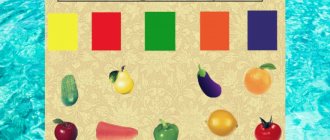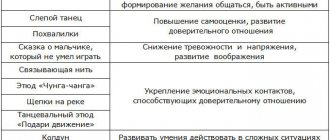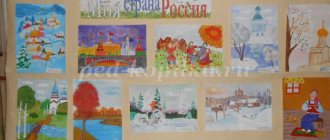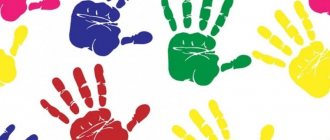Sand therapy for children makes a significant contribution to the development of cognitive and creative abilities, speech, fine motor skills and tactile sensitivity. Sand helps a child get rid of negative emotions, relax and relieve stress. Joint play and creativity with parents have a beneficial effect on family relationships.
Techniques for drawing on a light tablet
1. pouring
. The sand is clenched into a fist and passed through the fingers. The technique is suitable for drawing lines.
2. Pinch
. The child connects the thumb, middle and index fingers, picks up a little sand and scatters it. The method allows you to convey tones and shadows.
3. Palm
. With an open palm, the child levels the layer of sand, erases the drawing, and leaves prints.
4. Fist
. The child squeezes his palm and forms a spot on the sand layer with the back of his hand.
5. Finger painting
. This method allows you to create lines of different thicknesses and points, achieving image clarity. As a rule, children begin to work with their index finger. Encourage your child to use all fingers on both hands and make parallel movements. This stimulates brain activity.
6. Drawing with tools
. Drawings, lines, and ornaments are created using a comb. Pay your child's attention to how the pattern changes depending on the pressure applied.
Games and art therapy exercises
Sandy beach
Invite your child to imagine that he is on the seashore on a sunny day, grains of sand tickle his palms, he can hear the splash of waves, and there is silence all around. Let the baby touch the sand, take a handful while taking a deep breath and squeeze his fingers as hard as possible. As you exhale, the child gradually pours out the sand and relaxes.
Target:
development of tactile sensitivity, regulation of muscle tension, development of self-control.
Paths
Start with simple straight stripes. Then move on to broken, broken and wavy lines. Invite your child to draw a path home for their favorite fairy-tale character.
Target:
improvement of coordination of movements and orientation in space.
Additional exercises: “Rain” - for practicing drawing vertical lines. “Ladders” - this exercise teaches you to combine vertical and horizontal lines.
Sand doodles
Two people are playing. One person closes his eyes while the other person draws a simple doodle in the sand. Then the first participant opens his eyes and can complete the scribble, turning it into some kind of understandable image. Then the players change roles.
Target:
development of imagination.
My favorite toy
A child draws his favorite toy with sand and then describes it in words without naming it. The adult or other children present must guess what thing is being talked about.
Target:
development of coherent speech and communication skills, formation of the ability to understand each other.
Animal portraits
Invite your child to draw with sand animals expressing joy, delight, anger, fear, sadness, surprise. Ask the little artist to tell us who he depicted, what mood this character is in, what feelings he is experiencing, what happened to him and why, how you can help him.
Target:
acquaintance with basic emotions, learning to determine the emotional state, help in understanding one’s own feelings, development of coherent speech.
Puzzles
Make a wish for any object: an animal, a bird, a plant, a piece of furniture, a toy. Invite your child to guess what you have in mind based on the clues. If a pear is wished for, it can be described as follows: it is a fruit; grows on a tree; looks like a light bulb. The child must draw his answer on the light table.
You can make guesses and describe events. For example, celebrating the New Year, going to visit. Change roles so that the child has the opportunity to come up with riddles himself.
Target:
development of logical and associative thinking, imagination.
Gardener
“Turn” the light table into an orchard and invite your child to plant it with different plants. The kid makes drawings and tells what grows where. Ask him to describe fruits, vegetables and berries by color, shape and taste. Try to draw together the trees and shrubs on which fruits are ripening.
Target:
acquaintance with the world around us and broadening our horizons, developing thinking and coherent speech.
Complete the picture
Using sand on a light table, draw circles, squares, triangles and ask your child to complete the picture so that you get a sun, a ball, a house, a flag, a piece of cheese.
Target:
development of figurative memory and imagination.
Dressy socks
Children play in pairs or with an adult. The participants’ task is to draw two socks so that they make a set. To do this, you need to agree on what pattern will be on the socks, and try to depict it the same way.
Target:
developing the ability to work in a team, negotiate and come to a common decision, developing the skill of mutual assistance.
Footprints
Invite your child to imagine what the footprints of certain creatures, such as a hippopotamus or a spider, look like and draw them in the sand. Discuss the resulting prints: who left them, what his name was, where he was going, where he was from, what emotional state he was in. You can also depict traces of large raindrops or car tires, or use sand rollers.
Target:
acquaintance with the outside world, development of speech and imagination.
Writing on the sand
Prepare letters or numbers cut out of cardboard for the game. You can use large symbols from magnetic sets. Hand your child a letter or number and ask them to sculpt it out of sand. Rake the sand with the edges of your palms and form a letter. Check the sand letter with the original and start making the next one. So a whole City of Letters will appear on the light table!
Letters and numbers can not only be sculpted, but also written. Let the child draw the desired image with his finger first. Then you can use the stick, holding it like a pen.
Target:
consolidation of the graphic image of letters and numbers, formation of graphomotor skills.
Photographer
You need to play in pairs. Both participants look at each other carefully, trying to remember the features and hairstyle. After this, the children begin to draw a portrait of a friend with sand - take a photograph. When the “snapshots” are ready, discuss how accurate they turned out.
Target:
development of communication skills, mindfulness and social activity.
Journey through a fairyland
Let your child use his imagination and draw a fairy-tale kingdom on the light table. Give the young entertainer time to create, and then ask him to tell him the name of the country, who lives in it, what the character of these characters is, what events take place in the fairy tale.
Target:
development of imagination, logic and coherent speech.
In search of treasure
To play you will need small objects or stickers. Together with your child, draw a diagram map on a piece of paper with conventional images of a tree, river, mountain, forest, house. Using this map, create a sand painting.
When the drawing is ready, ask the child to turn away and hide a small “secret” in any part of the image. Place a cross in the appropriate place on the paper diagram. Give the map to the little treasure hunter and offer to find the treasure.
Target:
learning to draw maps, development of spatial thinking, logic, imagination.
Sand games are diverse. Choose a light table for sand painting, and let the activities help your child learn about himself and the world!
Sand therapy lesson program “Sand fantasies”
Sand therapy training program
"Sand Fantasies"
For children aged 6-14 years with various forms of behavioral disorders
Developers:
Chentsova Alexandra Yurievna
Volodarsk 2021
I. Explanatory note
Sand is a mysterious material. It has the ability to fascinate a person with its malleability, the ability to take any form, to be dry and light, or elusive and wet, or dense and plastic.
Playing with sand as a way of child development and self-therapy has been known since ancient times. The malleability of sand awakens the desire to create a miniature picture of the world from it. A person acts in the sandbox as a creator - one life story changes another, following the laws of existence: everything comes and everything goes, there is nothing that is irreparably destroyed, just the old turns into something different, new. By repeatedly experiencing this sensation, a person achieves a state of mental balance.
Playing with sand is a natural and accessible form of activity for every child. A child, especially one with special developmental needs, often cannot express his feelings and fears in words, and here games with sand come to his aid. By acting out the situations that agitated him with the help of toy figures, creating a picture of his own world from sand, the child is freed from tension. And most importantly, he gains invaluable experience in symbolically resolving many life situations, because in a real fairy tale everything ends well!
The big advantage of sand painting is the unique properties of sand - flowability, softness, pleasant roughness - which have a fascinating effect on a person. When painting with sand, a person enters a light meditative state, which gives him the opportunity to truly relax and unwind. This type of art is suitable for all age categories. Children especially love to play with sand.
Sand often acts like a magnet on children. Their hands themselves, unconsciously, begin to pour and sift sand, build tunnels, mountains, and dig holes. And if you add various toys to this, then the child has his own world, where he invents and fantasizes, and, at the same time, learns to work and achieve goals.
One way or another, observations and experience show that playing with sand has a positive effect on the emotional well-being of children and adults; this makes it an excellent means of “care for the soul,” which is how the term “psychotherapy” is translated.
Wet sand allows you to sculpt grandiose figures without small details, but very expressive in silhouette. You can make not only palaces from sand, but also cars, ships, various figures - sculptures, decorating them with pebbles, shells, and colored beads.
Characteristics of the institution
One of the links in the state system for the prevention of neglect and delinquency and the social rehabilitation of “at-risk” children are centers for the social rehabilitation of minors.
GBU NO “Center for Social Assistance to Children and Families of the Volodarsky District” is an institution whose activities are aimed at organizing social rehabilitation and health improvement of minors aged 6 to 18 years in need of social assistance.
The day care department (DCU) is a structural unit of the institution and provides social services to children in difficult life situations (DLS) and socially dangerous situations (SOP).
The department was created to implement social rehabilitation programs that contribute to the formation of an individual who is adequately oriented in society.
Disabled children, children from families in HOAs: large families, low-income families, single-parent families, and also those in a special needs community have the right to services.
An analysis of the social development situation of children in the center shows that most of them end up in the institution due to family problems. Various factors negatively affect the socialization of children: the lifestyle of parents, the low material level of the family, the existing conflictual relationships within the family and, in connection with this, an unfavorable psychological climate in the family, the widespread prevalence of “bad habits” among teenagers.
Solving the problem of moral education of children attending the center is quite difficult due to the fact that they, as a rule, did not receive a normal family upbringing, “their universities” took place on the street, and do not have clear moral criteria. Many of our students have seen so little good in life, but they have seen a lot of injustice, deception, their horizons are immensely narrow, their vocabulary is poor, they are bitter and aggressive. Children's mastery of norms of moral behavior and moral relations is impossible if there are no situations in life in which such experience can be accumulated.
The model for organizing psychological and pedagogical work in an institution is built on the principle of psychological and pedagogical support. Psychological rehabilitation allows the student to successfully adapt to the environment and society as a whole. It helps him achieve the necessary moral and psychological balance, accept and fulfill appropriate social roles.
The most important means of prevention and pedagogical correction of illegal behavior is the education of tolerant behavior of minors, which includes the study of constructive ways of communication.
Today, the most justified approach to organizing rehabilitation work is one that is aimed at each student developing his own version of life, worthy of him as a person in modern society.
II . Conceptual part
The institution creates conditions for restoring normal relationships between children and others, which is an important indicator of rehabilitation and pedagogical work.
The “Sand Fantasies” program is aimed at the overall development of the child, including the possibility of developing the emotional and volitional sphere, which are poorly developed in children attending preschool education, and contains tasks for creative activities using dry and wet sand.
Relevance
The “Sand Fantasies” program provides an opportunity to provide an individual approach to each child. The problem of the development of a child’s personality is currently one of the most pressing problems, because we are talking about the most important condition for the formation of an individual’s uniqueness already in the first stages of its formation. Playing and drawing are special forms of children's activities. Children's interest in them significantly depends on the extent to which the conditions and organization of work allow them to satisfy the basic needs of the child, namely:
- the desire to practically act with objects, which is no longer satisfied by simply manipulating them, as was the case at an early age, but involves obtaining a certain meaningful result;
- the desire to feel capable of making something that can be used and that can attract the approval of others.
For many people, putting thoughts into words is difficult, especially for children.
But there is still a language of facial expressions and gestures that can subtly express sensations or feelings in a drawing, in plasticine, the hand, as it were, builds bridges between the inner and outer worlds. Then the inner image becomes visible in the outer creation. This principle forms the basis of the sand therapy system. As you know, children enjoy playing in the sand, because such games are full of different emotions: delight, surprise, excitement, joy. This makes it possible to use sand games for development, enrichment of the child’s emotional experience, and for the prevention and correction of his mental states. Sand allows water to pass through, therefore, according to parapsychologists, it also absorbs a person’s negative energy and stabilizes his emotional state. Working on the “Sand Fantasies” program is an excellent means of developing children’s creativity, mental abilities, aesthetic taste, and design thinking.
Novelty and distinctiveness
The “Sand Fantasies” program is to develop in children creative and exploratory thinking, spatial concepts, some physical patterns, knowledge of the properties of various materials, mastery of various methods of practical actions, acquisition of manual skills and the emergence of a creative attitude towards the environment.
Necessity
in the creation of this program exists, since sand therapy is considered as a multifaceted process associated with the development of children and adolescents' creative abilities, imagination, fine motor skills, attention, logical thinking and perseverance.
III.Goals and objectives of the program
Purpose of the program:
1) Give the child the opportunity to be himself, reveal the individuality of each child, and ensure social success.
2) Development of coherent speech; assistance in learning letters, mastering reading and writing skills; development of graphomotor skills.
Program objectives:
- Promote the development of the child's communication skills through joint play activities.
- To develop tactile sensitivity as the basis for the emancipation of children’s consciousness.
- To develop the child’s interest in experimental activities and his curiosity.
- Prevention of optical-spatial dysgraphia;
- Develop all cognitive functions (perception, attention, memory, thinking, imagination), fine motor skills;
- Develop visual-spatial orientation;
- Improve object-based play activities that contribute to the development of role-playing games and the child’s communication skills;
- Resolving the child’s psychological difficulties, stabilizing the emotional state;
- Create a sense of security in an environment that is comfortable for the child;
- Relaxation, relieving muscle tension.
- Develop tactile sensitivity as the basis of “manual intelligence”.
IV. Mechanism for program implementation
- Terms of sale
Classroom - psychologist's office with carpeted flooring
- Equipment
.
Studio drawing tablet
.
A rectangular wooden tray measuring 49.5 x 5 x 7 cm. These dimensions are extremely important because they allow the child to keep the entire composition in sight, and not individual fragments. quartz sand
. The sand occupies approximately one third of the volume of the box; it should be clean, sifted, not large, but not too small and, preferably, light enough. It is important that it is pleasant to the touch. The work uses both dry and wet sand. To do this, you need to have a container of water.
- Organizational and methodological aspects
- Presentation of the possibility of carrying out rehabilitation work in a sensory room equipped with special equipment (meeting with teachers and creating motivation for joint work).
- Collection of anamnestic data, psychological diagnostics in order to clarify the traumatic event and identify the current level of development of the cognitive sphere, characteristics of the child’s emotional-volitional sphere and his zone of proximal development.
- The program is designed for 5-7 lessons with frequency of meetings twice a week for 1 hour. It is advisable to involve a teacher or psychologist who will provide support to the child between classes and also eliminate traumatic factors.
- Quantitative composition of groups
The optimal number of participants is 7 people, including adults.
- Qualitative composition of the group
Children and teenagers in the center. Children who have no contraindications for group work are selected for the group.
- Contraindications
Sand therapy should not be used in the following cases: - Epilepsy or schizophrenia - Client with very high levels of anxiety - Allergies to dust and small particles - Pulmonary diseases - Skin diseases and cuts on the hands
- Principles of organizing sand therapy
The principle of creativity
, creating a natural, stimulating environment in which the child feels comfortable and protected while being creative.
The principle of a differentiated and individual approach
, taking into account the age characteristics of the child.
The principle of humanization
involves building the educational process and educational relationships, focusing on the child’s personality.
The principle of reflexivity
means the child’s readiness and ability to creatively comprehend and overcome problem-conflict situations; the ability to acquire new meanings and values, adapt to unusual interpersonal systems of relationships, pose and solve extraordinary practical problems.
Integrative principle
involves a harmonious combination of all types and forms of organization of various artistic activities. The child’s experience consists of visual, auditory and kinesthetic sensations (modalities).
- Indicative structure of classes
Part 1. Introductory.
The goal is to encourage children to work together and establish emotional contact between children. Basic procedures: greeting ritual, warm-up games.
Part 2. Main
. This part accounts for the main semantic load of the entire lesson. It includes exercises and games aimed at developing the emotional, personal and cognitive spheres of the child.
Basic procedures: sand therapy, games and exercises to develop thinking, attention, memory, games to develop communication skills, drawing, creative work.
Part 3. Final.
Main goals: summing up the lesson, creating in each participant a sense of belonging to the group and consolidating positive emotions from working in the lesson, talking about what happened in the lesson.
- Methods and techniques of work
Visual
(sample showing, example, help).
Verbal
(explanation, description, encouragement, persuasion, use of tongue twisters, proverbs and sayings).
Practical
(independent and joint execution of images)
- Sand painting methods
The teacher invites the children to embody their ideas in the sand in the ways that they like best.
Sand can be leveled using both palms and fingers.
Hands can also work like a “bulldozer”, raking sand around.
You can use your fingers to make holes in the sand or draw on it.
You can use your fist or your index finger to make pictures.
You can use your hand to depict a wave in a drawing.
Master a new way of drawing with sand by cutting off the excess.
V. Expected results
Expected results of the program:
– ability to master various techniques of working with dry sand;
– the ability to create compositions and plots in the sand;
– sustained attention, memory, thinking, spatial imagination;
— development of fine motor skills of the hands and eye;
— artistic taste, creativity and imagination;
– improving communication skills and acquiring teamwork skills;
— participation in various types of gaming, visual, creative activities; expanding your horizons and vocabulary.
VI . Thematic planning
Title of the lesson
Goals, objectives
Practical activities
1.
Hello sand!
Introducing children to sand and its properties; improving coordination of movements, fine motor skills, spatial orientation;
Sand rain
(slowly or quickly pour sand from your fist, onto your palm or an adult, you can close your eyes).
Unusual tracks
(bears - press with your fists, hares - with your fingertips in different directions, snakes crawl, spider bugs run, crocoons - children create the tracks themselves).
Patterns in the sand
(with fingers, the edge of the palm, a fist) An adult draws various geometric shapes (in accordance with age standards for development), simple/complex patterns (straight and wavy paths, fences, stairs). The child must draw the same pattern below in the sand, or continue the adult’s pattern. Option: an adult draws on a board and gives verbal instructions to draw a specific pattern in the sand.
2.
Sensitive hands
Develop fine motor skills of the hands, form an idea of the variability of the shape of sand
Find the difference.
The child draws any simple picture on the surface of the sand, then shows it to an adult, while he turns away.
The adult completes some details and shows the resulting image to the child. The child should notice what has changed in the picture. An adult and a child can change roles during the game. Magic transformations.
It is no less interesting to combine several types of colored sand and at the same time get amazing combinations that are actively included in the game in the form of unusual images.
3.
sun rays
Developing children's cohesion, fine motor skills, awakening interest, stimulating attention;
Colored Islands (group).
Children are invited to take sand of any color and use it to create islands on the table surface; in addition, they can use miniature figures.
The children then travel to each other's islands, talking about them. Letters.
Are we learning letters? And kinetic sand will help you. It is easy and simple to model with, so be sure to practice. It is very exciting to sculpt letters and practice variations of their pronunciation.
4.
Patterns in the sand
Teach children to draw their mood in the sand, develop imagination
Snake.
Goal: relieve emotional stress. Task: express your attitude by showing it in the game. Instructions: take the Snake by the head or tail and move it along the sand. Now take the rope like a pen and smoothly follow the snake's trail. The child takes Snake by the head and writes patterns: circles, loops, sticks.
5.
Rainbow
Consolidating ideas about the world around us; development of hand motor skills, fine tactile sensations; development of speech, memory, thinking.
Period, period, comma.
Goal: familiarization with technical techniques and methods of imaging with
using sand. Period, period, comma - a crooked face came out. Hands, legs, cucumber - it turned out to be a little man.
Read the poem and draw a funny man in the sand..
Guess by touch.
This exercise is aimed at developing the child’s thinking and motor skills. The kid turns away, and the adult at this time hides a toy/stone/pine cone/shell in the sand... The child’s task is to find an object in the sand and guess by touch what it is. Then the participants in the game change roles
6.
World made of sand
“Playing out” various life situations, creating compositions in the sand.
We create the world.
Goal: development and expansion of the child’s ideas about the world of living and inanimate nature around him, about the man-made world of man. The teacher shows ways to build living and non-living communities in the sandbox - a city, a village, a forest, a river, a lake, an island, and then in a playful way encourages the child to build various natural and man-made communities independently and according to instructions. (the topic of constructions may correspond to the topic of classes)
7.
Eyes to eyes
Learning to build a composition on the sand according to a model; development of attention associated with coordination of movements
We are going to visit
. Goal: development of spatial concepts, orientation on the “sand sheet”; For children, the instructions are greatly simplified; only the reinforcement of sensory standards and “top-bottom” ideas is carried out. An adult, in a playful way, introduces the child to spatial concepts (or consolidates knowledge): “top - bottom”, “right - left”, “above - below”, “from behind - from under”, “center, corner”. The child, according to the adult’s verbal instructions, “walks, jumps, crawls” on the sand with his fingers, depicting various characters. Sand fairy. We are going to visit the bunny. Where does the hare live? (The hare lives in the forest because it is a wild animal.) In which corner of the sandbox does the forest grow? (Kids answer “at the top of the sandbox.”) Who lives next to the bunny? (Figures or pictures of wild animals are listed and placed in the sandbox.) Who is the bunny’s friends? Who is the bunny afraid of? What did the hare treat us with? What do we wish for the bunny?
VII. Bibliography
- Betenski Mala. What do you see? New methods of art therapy. – M.: Eksmo-Press, 2002
- Grabenko T.M., Zinkevich-Evstigneeva T.D. Miracles on the sand. Sand play therapy. – St. Petersburg: Institute of Special Pedagogy and Psychology, 1998, – 50 p.
- Grabenko T.M. , Zinkevich-Evstigneeva T.D. Workshop on sand therapy, St. Petersburg, “Rech”, 2002.
- Seitz M. We write and draw on the sand. Practical recommendations. – M., 2010.
- El G. Man playing in the sand. Dynamic sand therapy. – St. Petersburg, “Rech”, 2007.






